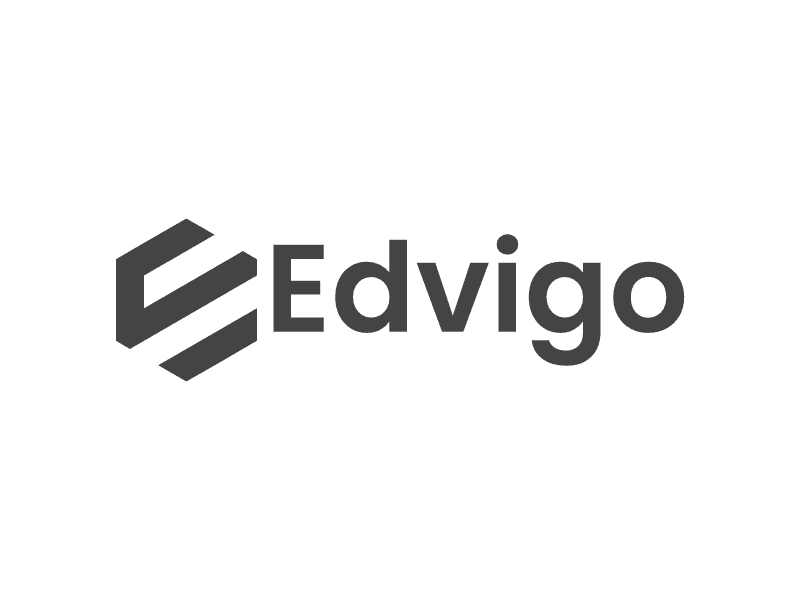Imagine rolling into work on a Monday (no one actually likes Mondays). But instead of everyone looking the same, thinking the same, and kinda, well, being the same—it’s a whole vibe of colors, languages, foods, and ideas. It’s like walking into an episode of the coolest, realest TV show that you didn’t even know you needed. That, my friends, is what cultural diversity in the workplace looks like. And seriously, the importance of it? Can’t even begin to stress it.
Having a workplace full of different cultures isn’t just about having some bomb potluck days or learning to say “hello” in six different languages (though, let’s be honest, that’s pretty dope too). It’s deeper than that. We’re talking about unlocking creativity, boosting your company’s bottom line, and creating a work environment that’s as inclusive as your group chat on a Friday night. Grab your iced coffee, and let’s dive deep into why cultural diversity at work is not just a buzzword but the secret sauce for thriving in our modern world.
The Social Dynamics of a Diverse Workplace
Let’s be real. People tend to stick to those they vibe with. And yeah, it’s common to hang with folks who share your interests, background, or sense of humor. But what happens when your workplace forces you to mingle, share ideas, and break bread with someone from a totally different background? You learn, you grow, and you see things from another perspective you probably would’ve missed otherwise.
Having peeps from different backgrounds means you aren’t just stuck in the same old echo chamber. You know those deep convos that leave you thinking for days? Yeah, a culturally diverse squad brings those vibes to your 9-to-5. Issues get examined from all angles. Everyone brings their own spice to the table, and the end result? Some serious world-changing ideas. Your workplace becomes a melting pot of perspectives, leading to better problem-solving and decision-making. It’s like the Avengers, but for real-world challenges.
Duolingo’s got nothing on this. Cultural diversity also means you get exposed to different languages, slang, and even social cues. What does that mean? You develop mad skills in communication and adaptability. You’re not just navigating coworker convos—you’re picking up real-life, global skills you’d probably never get behind a desk.
You see, when all the gears of cultural diversity start working together, the social dynamics elevate to a whole new stratosphere. There’s respect, understanding, and—most importantly—acceptance. People aren’t just getting along; they’re legit vibing, and that’s when the magic happens: The company culture begins to reflect the strength that diversity brings.
Why Diverse Teams Excel
Okay, let’s keep it 100. Diverse teams aren’t just a trend. They’re powerhouses! Think of it like this: A painting made from different colors and textures is way more striking than one monotone brushstroke. That’s how diverse teams work in the workplace. All those vibrant differences come together to paint a masterpiece, and, trust, the benefits are huge.
Studies have shown that companies with higher cultural diversity levels perform better financially. No cap, companies in the top quartile for diversity are 33% more likely to outperform their competitors. This isn’t just theory—this is FACTS supported by research. Why? Because different perspectives mean more creativity, innovation, and even better financial performance. Just sayin’—it’s like investing in a stock that just keeps going up.
But it’s not just about stacking up the paper. Diverse teams also bring a broader range of skills and experiences to the table. This can lead to more effective brainstorming sessions where everyone is tossing in ideas from their own unique background. Where one person sees a wall, another person might see a door—meaning challenges become opportunities when different minds come together.
Also, when your team mirrors society’s diversity, your company is more likely to understand and connect with a broad audience. That’s called relatability, folks. Imagine missing out on an entire market segment just because you didn’t have someone on deck who understood that community. When your workforce reflects your target audience, your marketing, outreach, and products are more likely to hit the bullseye.
And let’s not sleep on job satisfaction. When a workplace is diverse, employees are generally happier and stick around longer. This isn’t rocket science—people just feel more comfortable when they can be their authentic selves. Wouldn’t you wanna stay at a job where you can celebrate your holidays, speak your language, and share your culture without side-eye or judgment? Yeah, we thought so. Happy employees = less turnover = less hiring drama. It’s a win-win-win situation.
The Challenges That Come with Diversity
Not everything is smooth sailing, though. Cultural diversity comes with its own set of challenges. We gotta be real about that too. Mixing different backgrounds means different values, customs, and communication styles. Sometimes, these differences can spark misunderstandings or even tension, which is straight-up tough to navigate. But hey, conflict isn’t always a bad thing. It’s how you handle it that matters.
This is where strong management comes into play. Effective leadership needs to know how to foster a culture that celebrates differences while de-escalating any potential issues. It’s like being the peacemaker in your friend group. When everyone is arguing about what to do on a Friday night, you need someone to step up, listen to everyone, and find a solution that makes everyone happy. In this case, inclusion training, conflict resolution strategies, and open communication create that harmony. Plus, having an HR team that isn’t asleep at the wheel helps a ton.
Then there’s the risk of tokenism, where someone might feel like they’re just a “diversity hire” rather than being valued for their actual skills and contributions. Please, let’s leave those outdated mindsets in 2023. It’s crucial that companies ensure everyone, regardless of their background, is given the same opportunities to grow and shine. Diversity isn’t window dressing; it’s a key pillar of a progressive and inclusive workspace.
Lastly, there’s the awkward (and sometimes painful) process of unlearning biases. We all have them, no cap. But confronting them can feel like staring directly into the sun—it burns, but it’s necessary. The key here is to never shy away from uncomfortable conversations. The more we talk about biases and stereotypes, the more we can educate ourselves and others. Trust me, it’s worth the temporary discomfort for a more respectful, informed, and cohesive workplace.
How to Make Diversity Work for You
Alright, you’re sold on the idea of a diverse workplace—who wouldn’t be after all those benefits? But how do we go from just talking about it to actually living it? Here’s where we get actionable, because, fam, we gotta walk the walk too.
Educate Yourself and Others
It all starts with education. Unfortunately, no one wakes up one day with full knowledge about all the world’s cultures. So, you gotta put in the work. Attend diversity training sessions, workshops, or even hop on YouTube and do some research yourself. The more you know, the more comfortable you’ll be working in a culturally diverse setting. Don’t keep this knowledge to yourself; share it! Be that MVP who helps others get in the know too.
Speak Up
If you notice that your workplace isn’t as inclusive or respectful as it should be, say something. Yes, confronting issues can be nerve-wracking, but silence is compliance. Be that one person who stands up for what’s right. This could be as small as correcting someone about an offensive comment or as big as proposing a new diversity initiative. Your voice matters, and it could be the catalyst that sparks change.
Celebrate Differences
Celebrate all cultures, not just your own. Buzzing for holidays you’ve never heard of? That’s the vibe. Encourage your team to learn about and celebrate holidays, traditions, or even foods from different cultures. It’s not just fun—it’s a way to build genuine respect and camaraderie among coworkers. Think of it as the ultimate potluck but spiced with culture, tradition, and good vibes all around.
Go Beyond the Surface
It’s super easy to slap a diversity label on something and call it a day. But to make cultural diversity truly effective, you have to dig deeper. It’s not just about the number of different faces in a meeting room. Embrace diversity in ideas, ways of working, and experiences. Personal growth and collective strength come from embracing those differences, not just tolerating them. 😎
The Long-Term Benefits of Cultural Diversity
Let’s zoom out a bit and look at the long game. Cultural diversity in the workplace isn’t just good for the here and now—it’s an investment in the future. Companies that prioritize diversity don’t just see short-term success; they build a foundation for long-term stability and growth. In a world that’s constantly evolving, what’s more important than staying relevant?
Firstly, cultural diversity creates a resilient and adaptable workforce. This means your company can bounce back quicker from setbacks, adapt to market shifts, and generally handle curveballs better. When you’ve already got a bunch of different perspectives and skill sets within the team, pivoting becomes less daunting—almost natural.
Secondly, as the global economy continues to grow, having a diverse team helps your company tap into new markets abroad. Remember that relatability factor? Here’s where it comes in clutch. When your team understands and reflects the culture of a potential market, jumping into that market becomes less like a leap of faith and more like a calculated, informed move. Plus, it opens doors for cross-border collaborations, partnerships, and even friendships.
Lastly—this one’s for the younger readers—being part of a diverse team sets you up for career growth like nothing else. You’re not just adding job lines to your resume; you’re building a whole portfolio of adaptability, cultural intelligence, and global awareness. The kind of experience that future employers will eye like, “Damn, we need this one on our team.” So, in the long run, a diverse workplace helps you develop skills that are increasingly valued in our interconnected world.
Changing the Corporate Landscape
Shifting gears a bit—let’s talk about how cultural diversity is changing the corporate landscape. The old-school corporate environment (think Mad Men) was rigid, hierarchical, and painfully homogenous. But we’re not in the 1960s anymore, Dorothy! 🌈 The modern workplace needs to be as fluid, flexible, and dynamic as the world outside it.
The rise of global companies has led to the natural integration of different cultures, but it’s also forced the hand of traditional companies to step up their game. No one wants to be left behind, especially in such a competitive market. Some companies lose top talent because they’re stuck in the past. But those that embrace diversity? They’re the ones leading the charge into the future.
Moreover, the increased demand for inclusive work environments has made cultural diversity a non-negotiable issue. It’s no longer just an HR thing; it’s a CEO thing, an every-department thing. When diversity becomes integral to a company’s DNA, it leads to groundbreaking innovations and products that feel more inclusive and accessible. Diversity isn’t just a checkbox—it’s a game-changer.
And this corporate shift isn’t just happening in tech startups in Silicon Valley. It’s spreading across sectors from retail to finance to healthcare. Why? Because diverse ideas drive industries forward. Companies that resist this shift are starting to look archaic and—heads up—they’re the ones getting canceled by their own customers. People are loyal to brands that reflect their values, and in today’s world, diversity is a major value.
Connecting Diversity to Corporate Social Responsibility (CSR)
Let’s talk about CSR. Gen Z cares deeply about social justice, the environment, and equity. Workplace diversity isn’t isolated from these, like, core concerns. In fact, they go hand-in-hand.
A diverse workplace naturally contributes to more well-rounded CSR initiatives. Here’s the tea: Companies that truly embrace diversity are generally better at implementing CSR in meaningful ways—whether that’s supporting fair trade, reducing their carbon footprint, or even taking part in community outreach. Why? Because diverse teams provide a fuller picture of what “doing good” looks like on a global scale. They’re also more likely to hold leadership accountable for following through on promises.
Diversity in the workplace also fosters innovation in CSR. Remember, when you have a team of different people from various walks of life, the solutions they come up with will naturally be more dynamic and inclusive. Whether it’s creating eco-friendly products or advocating for social justice, diverse teams are more likely to disrupt the status quo in ways that resonate with a global audience.
Not only that, but a company’s commitment to diversity also sends a message to the outside world. It’s a visual symbol that they’re not just talking the talk but also walking the walk. That level of authenticity is HUGE for brand loyalty and public relations. Trust, people notice when a company says one thing and does another. No one is trying to be photographed sipping from their dirty-ass “good intentions” straw. We want that realness, and diverse companies give us just that.
What Companies Can Do to Improve Workplace Diversity
So, we’ve laid out why cultural diversity is so important, but what does this look like in practice? Companies ain’t gonna improve without putting in the work, so here’s what they should be doing to make sure their mission statements don’t just collect dust on some forgotten conference table.
Hire for Potential, Not Just Experience
Companies should seriously rethink their hiring processes. Diversity goes beyond race, gender, or ethnicity—it’s also about different perspectives shaped by experiences. Hiring managers should look beyond typical qualifications and tap into the potential of individuals who bring something extra to the table. Not everyone’s journey is linear, and sometimes, the best hire is someone who didn’t follow the traditional path but still kicks it just as hard, if not harder.
Create Inclusive Policies
Workplace policies should actively promote inclusivity, not just equality. Cue in flexible working hours for different time zones or cultural holidays, parental leave policies that include all types of family structures, and safe spaces for employees to express their concerns. Policies should work for everyone, not just the select few that fit into a specific mold. And let’s not forget accessibility—because diversity includes everyone, including those with different abilities. No more “one-size-fits-all” approach!
Promote from Within
One of the most effective ways to improve diversity is to build it up from within. Promoting employees from diverse backgrounds into leadership positions sets a strong precedent for every level of the company. It says, “We see you, we value you, and we trust you with the reins.” Not only does this improve team morale, but it also ensures that the company’s leadership base is just as diverse as the rest of the workforce.
Implement Bias Training
So much of bias is unconscious—it’s ingrained in everyone, no matter how woke you think you are. Regular bias training sessions aren’t just a checkbox; they’re essential. It’s about creating awareness and actively challenging those biases. Companies that take bias training seriously create an environment where everyone feels heard, seen, and respected, allowing for true collaboration and innovation.
Create Safe Feedback Channels
Employees need a place where they can speak up without the fear of retaliation. A whistleblower-friendly environment is key, but let’s change that name: how about an “Equal Voice” platform? 📣 Whether it’s an anonymous survey, direct conversations with HR, or even one-on-one chats with leadership, these spaces need to be safe and legit, ensuring that when issues of inequality or discrimination arise, they’re handled promptly and effectively.
Champion for Intersectionality
Intersectionality—this word makes some people’s heads hurt. But it’s essential. Companies need to recognize that people don’t just check one box when it comes to identity. Someone can be a woman, Black, LGBTQ+, and an immigrant, all at once. Recognizing intersectionality ensures that diversity efforts aren’t just surface-level but address the complex, layered identities that make people unique. Only then can we create a genuinely inclusive workplace.
With these strategies in play, companies can start to tangibly improve their workplace diversity rather than just paying lip service to the idea.
The Road Ahead: Gen-Z Shaping the Future
Yo, Gen-Z! 👋 It’s our time to shine, forreal. We’re about to enter the workforce (if we haven’t already), and let’s keep it 100—we’re not here for business as usual. We’re the most diverse, socially aware, and outspoken generation yet, and we’re gonna be the ones shaping the future of the workplace. Here’s how we can keep that energy up.
We need to demand what we deserve. Diversity is not negotiable for us—it’s a must. If you walk into a workplace and everyone looks the same or thinks the same, call it out. Push for the kind of inclusive atmosphere where everyone feels like they belong, because guess what? That’s the secret formula for a thriving workplace.
Be the Change You Want to See
We’re not here to just occupy seats in offices; we’re here to disrupt, challenge, and change the status quo. When we see someone being marginalized, we don’t stay quiet. When we realize policies aren’t inclusive, we advocate for change. Each of us has a voice, and when we use it collectively, we’re unstoppable. Don’t sleep on your influence—speak up in staff meetings, join diversity committees, and bring your unfiltered self to the table.
Leverage Social Media for Good
Gen-Z is the social media generation. Use that power wisely. Social media isn’t just for selfies and memes—it’s a platform for advocacy, learning, and community-building. Follow accounts that focus on workplace diversity, share impactful articles, and don’t be afraid to call out companies publicly when they’re failing in their diversity efforts. Arm yourself with knowledge and use it to hold those in power accountable.
Educate Yourself Continuously
Education doesn’t stop at college or training programs. Make lifelong learning your thing. Stay woke about the ever-evolving issues that surround diversity. Time to ditch those comfort zones and dig coal in the knowledge mines. By continuously educating ourselves, we remain equipped to advocate for diversity wherever we find ourselves. Articles, documentaries, blogs, and even traveling—there are countless ways to broaden your view.
Be an Ally, Not Just a Bystander
Allyship is key. If you’re in a position of privilege (and let’s be honest, everyone has them in some form), use it to uplift others. Whether it’s advocating for someone else’s ideas in a meeting or mentoring a colleague from an underrepresented group, being an ally in the workplace amplifies diverse voices and combats systemic inequality. And trust, allyship isn’t just a one-time thing—it’s an ongoing commitment to justice, equity, and inclusion.
Don’t Be Afraid to Fail
Change is hard, and even the best intentions can sometimes go sideways. Don’t be put off by failure—that’s how we learn and grow. When pushing for more diversity and inclusivity, you might face backlash, you might make mistakes, but it’s crucial to keep going. Learn from those failures and use them to make an even bigger impact next time. Remember, each step forward is progress.
FAQs on Cultural Diversity in the Workplace
Okay, we’re almost at the finish line—time to answer some of the burning questions you might have snagging at the back of your mind. These FAQs are aimed to clear up any lingering confusion and fill in any gaps you might have. Let’s get into it.
Q: What exactly does "Cultural Diversity" mean in the workplace?
A: Cultural diversity in the workplace means having a mix of people from different backgrounds, ethnicities, languages, religions, and experiences, all working together. It’s about embracing and leveraging those differences to create a richer, more creative work environment.
Q: Why should companies care about cultural diversity?
A: Beyond being the right thing to do, cultural diversity can drive better business outcomes. Diverse teams are proven to be more creative, innovative, and better at problem-solving. Plus, they help companies reach and connect with broader markets and customer bases.
Q: How can small businesses promote cultural diversity?
A: Even with limited resources, small businesses can prioritize cultural diversity by being intentional in hiring practices, offering cultural competency training, and creating an inclusive work culture where every employee feels seen and heard.
Q: What is the difference between diversity and inclusion?
A: Diversity is about getting different people into the room, while inclusion is about making sure everyone feels comfortable, valued, and able to contribute once they’re there. You can have diversity without inclusion, but that’s not what we’re aiming for.
Q: What are the consequences of not prioritizing workplace diversity?
A: Companies that don’t prioritize diversity risk falling behind in innovation, employee satisfaction, and market relevance. They might also face public backlash, losing the trust of consumers and potential talent alike.
Q: How can I measure my company’s diversity efforts?
A: Start by looking at your workforce’s demographics but go further by evaluating inclusivity—surveys, focus groups, and one-on-one discussions can give insight into how employees from diverse backgrounds feel about their roles and environment.
Q: What role does leadership play in fostering diversity?
A: Leadership sets the tone. If company leaders prioritize diversity and inclusion, those values will trickle down throughout the organization. Leadership can champion diversity by setting goals, allocating resources, and holding everyone accountable.
Q: Are there any legal aspects companies need to consider?
A: Absolutely. Anti-discrimination laws, equal employment opportunity, and affirmative action policies are just a few legal considerations. Staying informed about these can protect companies from legal troubles while promoting a fair and just workplace.
Q: What should I do if I face discrimination at work?
A: First, document everything. Then, identify if your company has an HR department or a specific person you can report the issue to. If the problem persists, you might want to consider legal action or turning to external support networks like labor unions or advocacy organizations.
Q: How can I contribute to diversity if I’m in a non-leadership role?
A: Anyone can be a catalyst for change. By educating yourself, advocating for your peers, participating in diversity initiatives, and leading by example, you can make a meaningful impact no matter your role in the company.
Conclusion and Sources
Cultural diversity in the workplace is more than just an "unicorn" demographic checkbox—it’s the backbone of innovative, successful, and resilient companies. The benefits of having a diverse workforce are undeniable, from sharpening creativity to driving better financial results. But let’s keep it real—these benefits don’t roll in just because you have a mix of people in the office. It takes work. Work at the personal level, at the organizational level, and yeah, even at the societal level.
As Gen-Z, it’s up to us to keep pushing those boundaries, questioning the old norms, and demanding the diversity we know truly matters. Because at the end of the day, a diverse workplace isn’t just better for the company—it’s better for everyone working there. Step by step, convo by convo, policy by policy, we have the power to change the world one workplace at a time. Ready to make that happen? Let’s get it! 🔥
Sources and References:
- McKinsey & Company’s "Diversity Wins" report, 2020. (Read for data on financial performance and diversity)
- Harvard Business Review’s "How Diversity Can Drive Innovation", 2013. (For insights on innovation and diversity)
- Pew Research Center on Gen-Z Characteristics, 2019. (For cultural diversity stats among Gen-Z)
- Global Diversity Practice, "What is Diversity and Inclusion?", 2018. (For definitions and explanation of D&I concepts)




